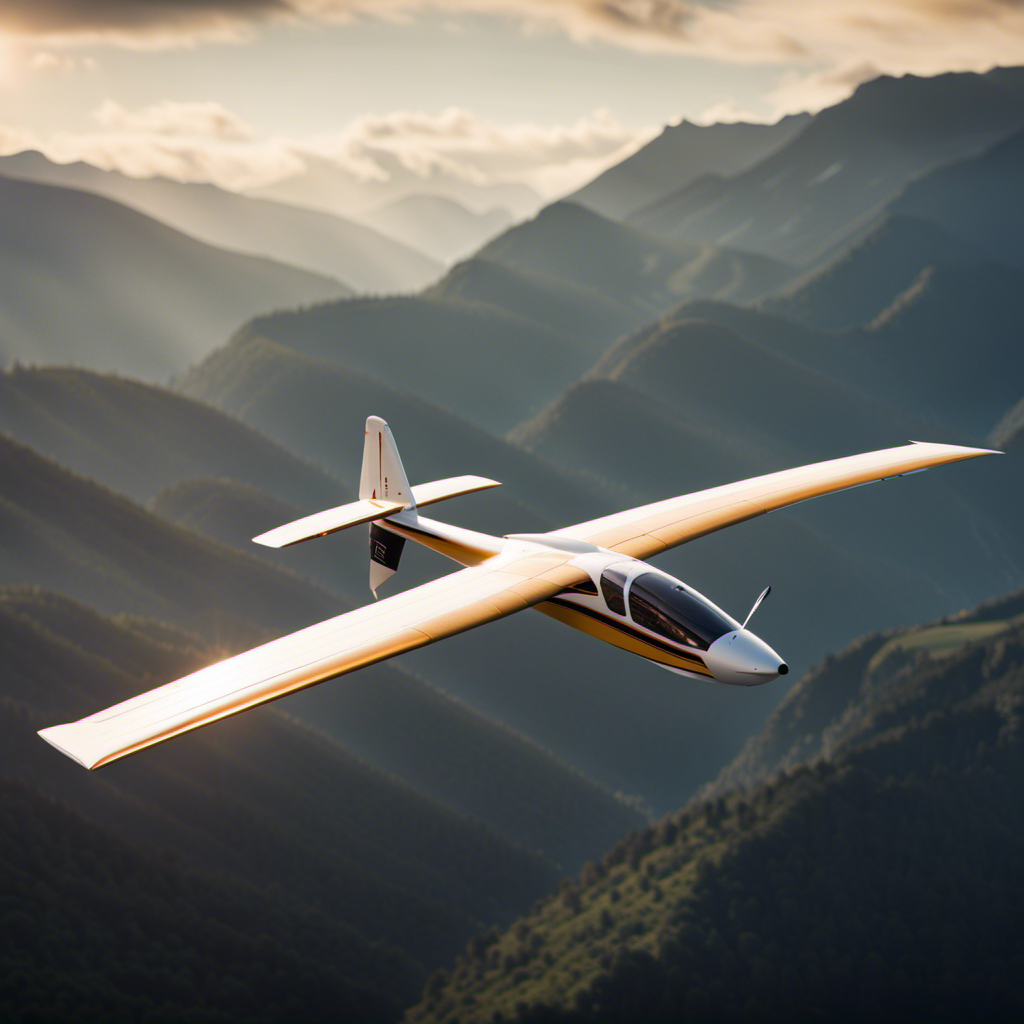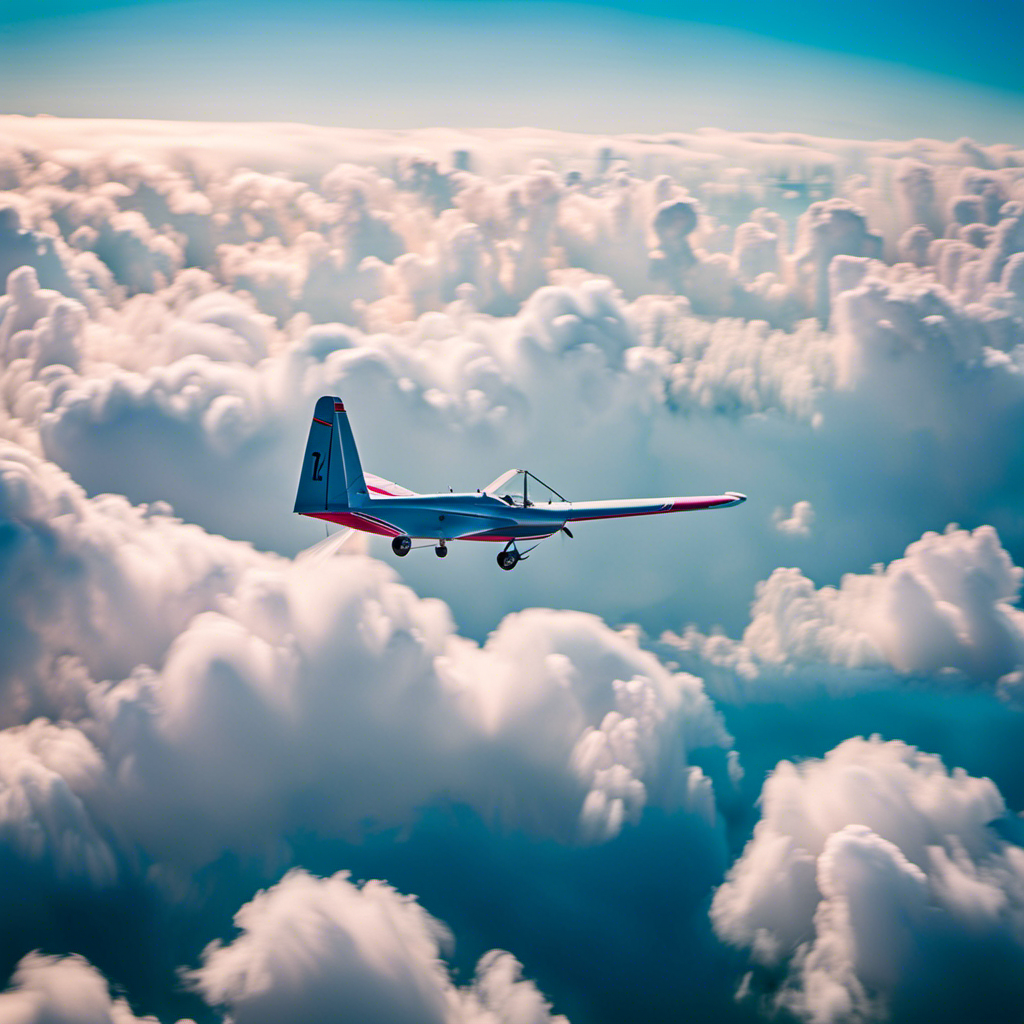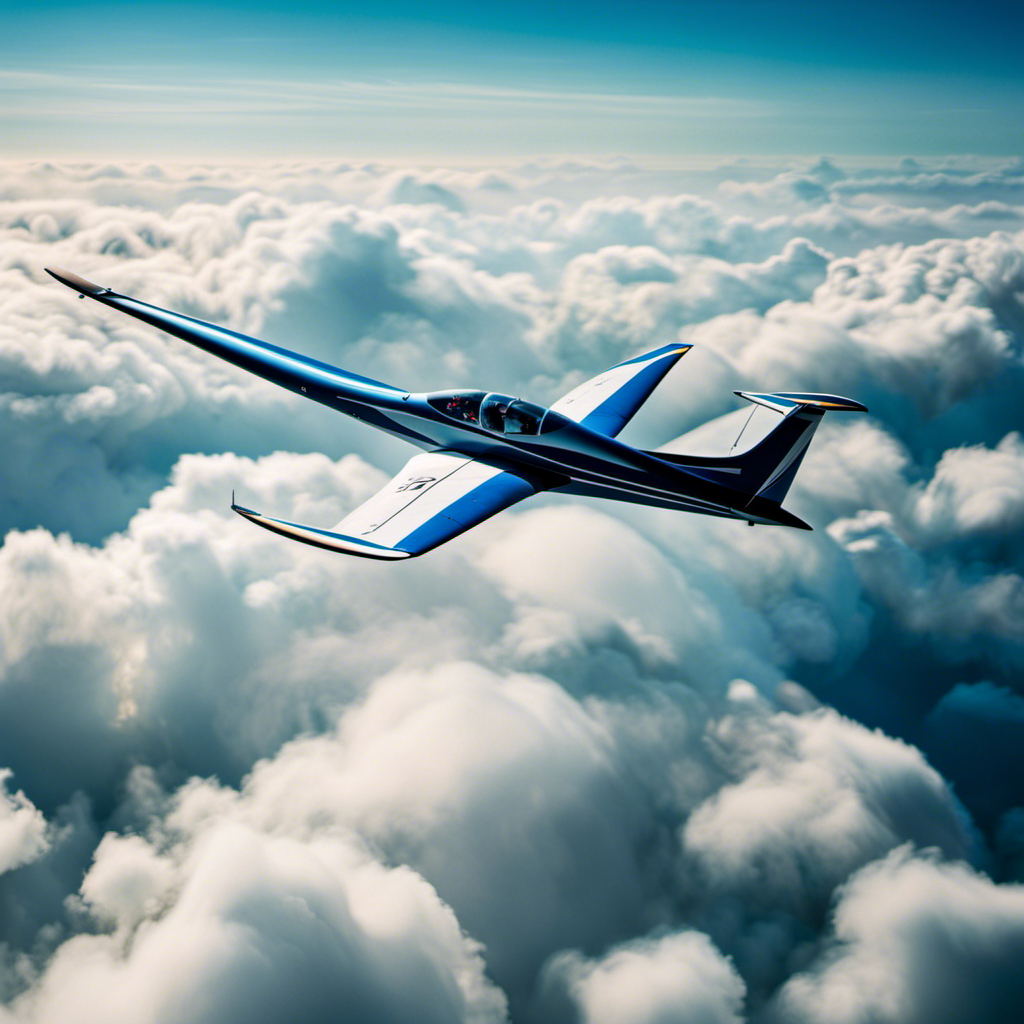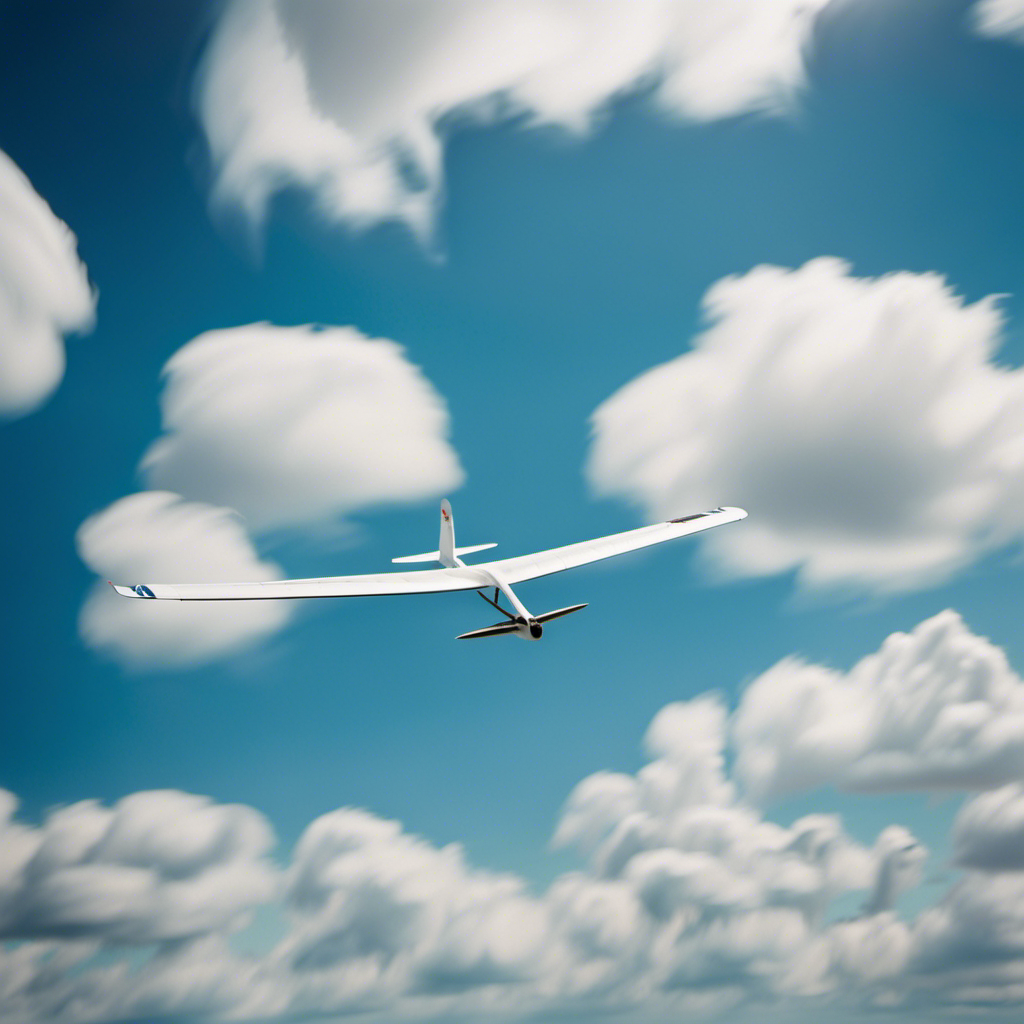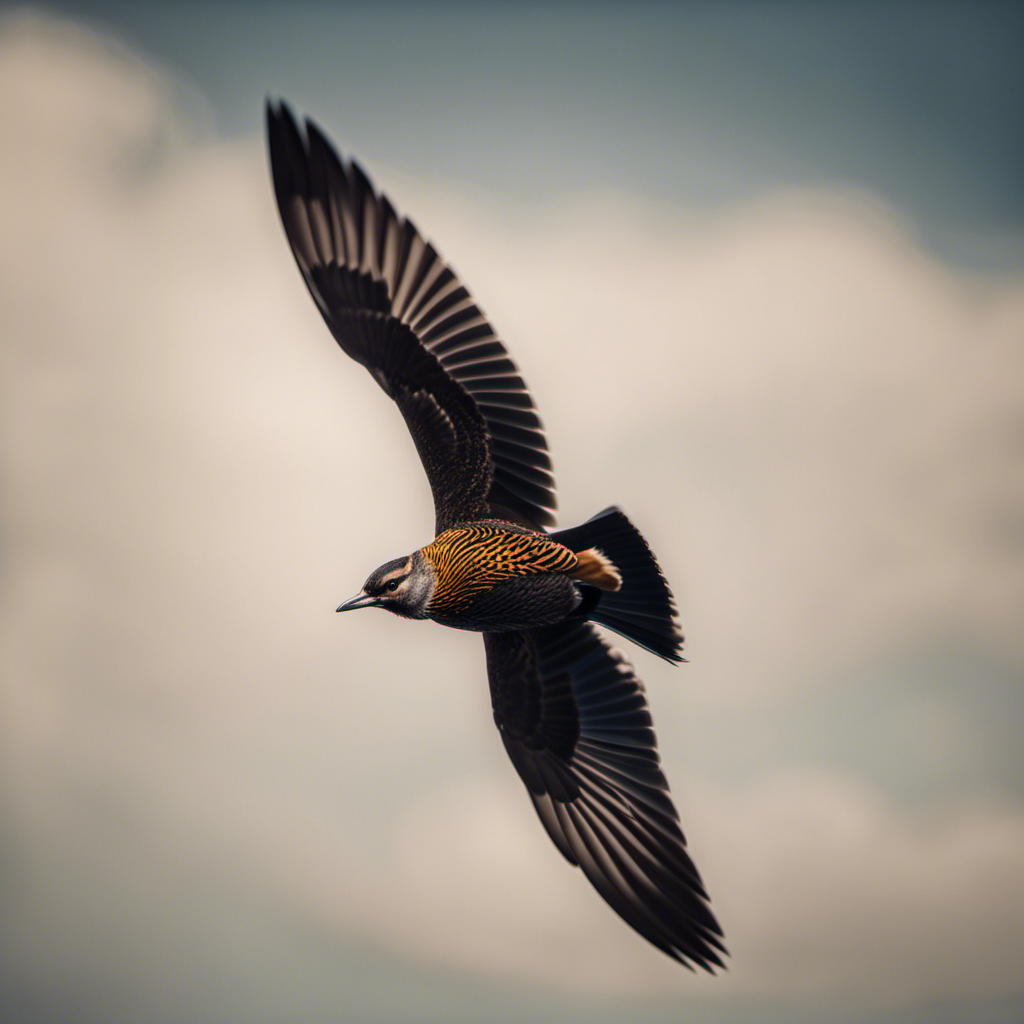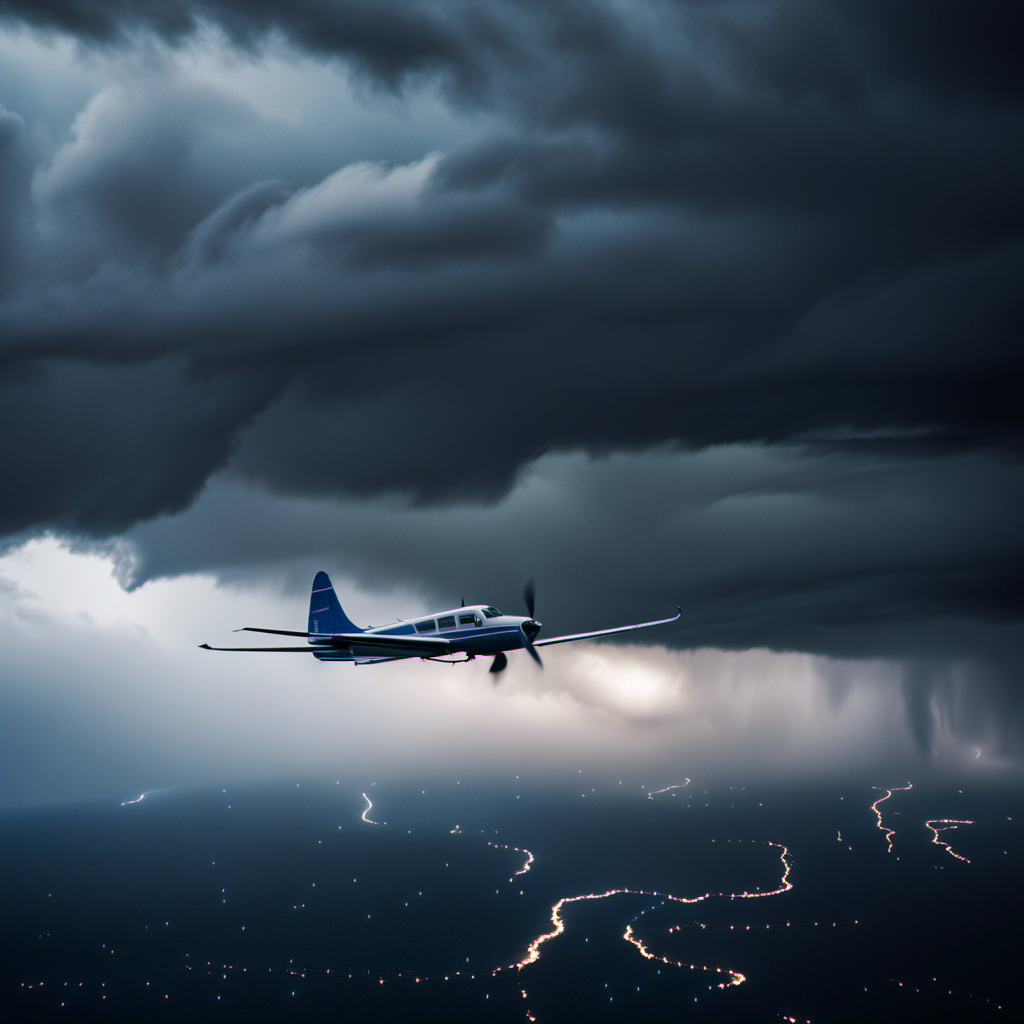As a glider pilot, I have always been fascinated by the intricate details that affect the performance of gliders. Understanding the key components that impact our ability to soar through the skies is crucial for achieving optimal results.
In this article, we will delve into the technical aspects of wing design, weight and balance, weather conditions, glide ratio, lift and drag, trim settings, pilot technique, maintenance and upkeep, as well as the importance of training and education.
So, buckle up and prepare to explore the fascinating world of glider performance.
Key Takeaways
- Streamlined wing shape and lightweight materials are crucial for reducing drag and improving efficiency in glider performance.
- Proper weight distribution and calculating the center of gravity are essential for stability and optimal performance.
- Weather conditions, including wind patterns and thermals, greatly influence glider performance and should be understood for safer and more efficient flying.
- Maximizing glide ratio through aerodynamic efficiency and utilizing soaring techniques such as finding thermals and wave lift enhances glider performance.
Wing Design
To maximize your glider’s performance, you’ll want to pay close attention to wing design. The wing construction and aerodynamics play a crucial role in determining how well your glider will fly.
When it comes to wing construction, there are a few key factors to consider. First, the shape of the wing is important. A well-designed wing will have a streamlined shape, with a gentle taper towards the tip. This helps to reduce drag and improve overall efficiency.
Additionally, the material used for the wing construction is crucial. Lightweight materials such as carbon fiber or fiberglass are commonly used, as they provide strength without adding excessive weight.
Moving on to aerodynamics, the wing’s profile is a critical aspect. The airfoil shape, which is the cross-sectional shape of the wing, plays a significant role in generating lift. A well-designed airfoil will create a higher pressure on the bottom surface of the wing, while simultaneously reducing pressure on the top surface. This pressure differential creates lift, allowing the glider to stay aloft.
With a solid understanding of wing design and its impact on aerodynamics, we can now move on to the next key factor: weight and balance.
Weight and Balance
Proper weight distribution is crucial in ensuring the stability and performance of an aircraft. It affects the aircraft’s ability to maintain balance and control during flight.
Calculating the center of gravity is essential in determining the optimal weight distribution, allowing for safe and efficient operation.
Importance of Proper Weight Distribution
The importance of maintaining an appropriate weight distribution cannot be overstated when it comes to glider performance. Proper weight distribution is crucial for achieving optimal wing loading, which directly affects the glider’s stability and maneuverability.
The wing loading is the weight of the glider divided by the wing area, and it determines how much lift is generated per unit area. If the weight is not distributed evenly across the wings, it can lead to imbalanced lift and a decrease in performance.
To ensure proper weight distribution, pilots must carefully consider the placement of passengers, cargo, and fuel in the glider. By maintaining a balanced weight distribution, gliders can achieve better control and efficiency in flight.
Transitioning into the subsequent section about calculating the center of gravity, it is essential to determine the precise location of the glider’s weight distribution.
Calculating Center of Gravity
When calculating the center of gravity, you need to consider the position of all the components in the glider. This involves a careful analysis of weight distribution. To ensure proper balance and stability, it is crucial to determine the glider’s balance point accurately. This can be done through a weight distribution analysis, which takes into account the weight and position of each component. The table below illustrates an example of calculating the center of gravity for a glider:
| Component | Weight (lbs) | Position (inches) |
|---|---|---|
| Wing | 150 | 50 |
| Tail | 75 | 100 |
| Fuselage | 200 | 0 |
Weather Conditions
Understanding glider performance involves considering weather conditions, such as wind speed and direction. Weather plays a crucial role in determining how a glider will perform in flight. Here are three key factors related to weather conditions that greatly impact glider performance:
-
Wind patterns: Glider pilots need to be aware of the prevailing wind patterns at the flying site. Wind direction and speed can affect the takeoff and landing procedures, as well as the overall flight path. Crosswinds can create challenges during takeoff and landing, while headwinds or tailwinds can influence the glider’s speed and efficiency.
-
Thermal conditions: Thermals are columns of warm air that rise from the ground. These thermal updrafts can provide gliders with additional lift, allowing them to climb to higher altitudes and stay aloft for longer periods. Pilots must be able to identify and exploit thermals effectively to maximize their glider’s performance.
-
Weather fronts: Weather fronts, such as cold fronts or warm fronts, can significantly impact glider performance. These fronts can affect wind patterns and create atmospheric instability, leading to turbulence or changes in wind direction. Pilots must monitor weather forecasts and be prepared to adjust their flight plans accordingly.
Considering these weather conditions is essential for optimizing glider performance. By understanding wind patterns, thermal conditions, and weather fronts, pilots can make informed decisions to enhance their glider’s performance and safety.
Transitioning into the subsequent section about glide ratio, it is important to note that weather conditions directly influence the glider’s ability to maintain its glide ratio.
Glide Ratio
To optimize your glider’s performance, you need to consider the glide ratio, which directly impacts your ability to stay in the air and cover distance efficiently. The glide ratio is a measure of how far your glider can travel horizontally for every unit of altitude lost. It is a critical factor in determining the efficiency of your flight and can be improved through various soaring techniques and by maximizing aerodynamic efficiency.
Soaring techniques such as finding thermals, ridge soaring, and utilizing wave lift can help you maintain or even gain altitude, increasing your glider’s glide ratio. By understanding the behavior of air currents and exploiting them effectively, you can extend your flight time and cover more distance.
Aerodynamic efficiency plays a crucial role in optimizing your glide ratio. It is affected by factors such as the shape and design of your glider, wing loading, and the use of spoilers or flaps. Ensuring a streamlined profile, reducing drag, and maximizing lift generation are all essential for achieving a higher glide ratio.
Now, let’s delve into the next section about lift and drag, where we will explore the forces that affect glider performance and how they can be manipulated to enhance your flight capabilities.
Lift and Drag
In the previous subtopic, we discussed the importance of the glide ratio in understanding glider performance. Now, let’s delve into the key factors that contribute to this performance: lift and drag.
When a glider is in flight, it experiences two primary aerodynamic forces: lift and drag. Lift is the force that opposes gravity and allows the glider to stay airborne. Drag, on the other hand, is the force that acts opposite to the direction of motion, hindering the glider’s forward progress.
To better understand the relationship between lift and drag, let’s take a look at the following table:
| Lift | Drag |
|---|---|
| 10 | 5 |
| 20 | 8 |
| 30 | 10 |
| 40 | 12 |
| 50 | 15 |
As we can see from the table, as lift increases, so does drag, but at a slower rate. This is important because it allows us to calculate the lift-to-drag ratio, which is a measure of efficiency. A higher lift-to-drag ratio indicates a more efficient glider, as it can generate more lift for a given amount of drag.
Understanding lift and drag and their relationship is crucial for optimizing glider performance. In the subsequent section, we will explore performance modifications that can enhance these aerodynamic forces and improve overall glider efficiency.
Performance Modifications
When it comes to improving the efficiency of an aircraft, two key modifications that can be considered are adding winglets and installing spoilers.
Winglets are small vertical surfaces attached to the wingtips. They help to reduce the drag caused by vortices at the wingtips, thus improving fuel efficiency.
On the other hand, spoilers are panels that can be raised or lowered on the wings. They disrupt the smooth airflow and generate drag, providing better control and increased descent rate during landings.
Both of these modifications play a crucial role in enhancing the overall performance of the aircraft.
Adding Winglets for Improved Efficiency
Adding winglets can significantly improve the efficiency of gliders. Winglets are small, vertical extensions at the tips of the wings that alter the flow of air around the aircraft, reducing drag and improving aerodynamic performance.
Here are three key reasons why winglets are effective:
-
Reduced drag: Winglets prevent the formation of vortices at the wingtips, which are responsible for a significant amount of drag. By minimizing these vortices, winglets help to decrease drag, allowing the glider to maintain a higher speed and glide ratio.
-
Improved lift-to-drag ratio: Winglets enhance the lift-to-drag ratio by reducing induced drag. This enables the glider to fly more efficiently, covering longer distances with less energy expenditure.
-
Increased stability: Winglets enhance the stability of the glider, particularly during turns. They help to maintain a balanced airflow across the wings, reducing the risk of stalling and improving control responsiveness.
By incorporating winglets, gliders can achieve better overall performance and efficiency.
Now, let’s explore the next topic of installing spoilers for better control.
Installing Spoilers for Better Control
Spoilers, which are devices that disrupt the airflow over the wings, can greatly improve the control of gliders. By deploying spoilers, pilots can effectively reduce lift, causing the glider to descend quickly. This feature is particularly useful during landing approaches or when encountering strong updrafts.
The effectiveness of spoilers in enhancing control can be attributed to their ability to create drag and alter the lift distribution on the wings. Spoilers are typically installed near the wing’s trailing edge, allowing for easy deployment and retraction. The installation process involves integrating the spoilers into the wing structure while ensuring minimal disruption to the aerodynamics. Once installed, spoilers can be operated through a control lever in the cockpit.
Now, let’s explore how trim settings play a crucial role in optimizing glider performance.
Trim Settings
Adjusting your trim settings is crucial for optimizing glider performance. By making precise adjustments to the trim, you can improve the glider’s flight characteristics and efficiency. This involves altering the position of the trim tab on the control surface to modify the glider’s balance. Analyzing the glider’s behavior during flight, such as pitch and control response, is essential for achieving the best trim settings. If the glider tends to nose down or requires excessive control input, it may indicate the need for trim adjustment. Finding the optimal balance through fine-tuning allows the glider to maintain its desired attitude with minimal effort. It is equally important to develop proper pilot technique to maximize the benefits of trim adjustments. Mastering precise control inputs and anticipating changing flight conditions will enable you to fly more efficiently and safely. Integrating trim adjustments seamlessly into your flying style is essential for optimal performance.
Pilot Technique
Mastering the art of precise control inputs is crucial for maximizing the benefits of trim adjustments in pilot technique. As a pilot, my skill and understanding of flying techniques play a vital role in achieving optimal performance. Here are four key factors that contribute to effective pilot technique:
-
Aerodynamic Knowledge: Having a deep understanding of how the aircraft interacts with the air is essential. This knowledge allows me to anticipate and respond to changes in flight conditions with precision.
-
Smooth Control Inputs: Maintaining smooth and precise control inputs is crucial for maintaining stability and efficiency. By avoiding abrupt or excessive movements, I can ensure a smooth flight and minimize unnecessary energy loss.
-
Situational Awareness: Being aware of my surroundings and staying alert to any potential changes in the environment is critical. This allows me to make timely and appropriate adjustments to maintain desired flight characteristics.
-
Continual Training and Practice: Regular training and practice sessions are necessary to enhance my skills and keep up with the latest flying techniques. This ongoing commitment to improvement ensures that I am always refining my pilot technique.
By mastering these aspects of pilot skill and flying techniques, I can effectively utilize trim adjustments to optimize performance.
Transitioning into the subsequent section about maintenance and upkeep, it is important to note that in addition to pilot technique, proper maintenance and upkeep of the aircraft are also crucial for achieving optimal performance.
Maintenance and Upkeep
Regular maintenance and proper upkeep of the aircraft are essential to ensure optimal performance. As a pilot, I understand the importance of following a strict maintenance schedule and conducting thorough equipment inspections. Adhering to these practices guarantees that the glider is safe to fly and operates at its peak efficiency.
A well-defined maintenance schedule outlines when specific tasks need to be performed. This ensures that crucial components, such as the wings, control surfaces, and landing gear, are regularly inspected and maintained. By adhering to this schedule, I can detect any potential issues before they become major problems, preventing costly repairs or, worse, accidents.
In addition to the maintenance schedule, conducting equipment inspections is equally important. Prior to each flight, I meticulously inspect the glider for any signs of wear and tear, ensuring that all systems are in proper working order. This includes checking the control cables, brakes, and instruments. By taking the time to inspect the equipment thoroughly, I can identify any potential issues that may affect the glider’s performance.
Understanding the significance of regular maintenance and equipment inspections highlights the importance of training and education in the aviation industry. By continually expanding my knowledge and staying up to date with the latest maintenance techniques, I can ensure that my glider is always in top condition, providing me with the best possible flying experience.
Training and Education
Training and education are crucial for pilots to continually expand their knowledge and stay up to date with the latest techniques in the aviation industry. As a pilot myself, I understand the importance of staying current and continually improving my skills.
There are various training techniques and educational resources available to pilots, which help us enhance our abilities and ensure the safety of our flights.
One effective training technique is simulator training. Simulators provide a realistic environment where pilots can practice various flight scenarios and emergency procedures. This allows us to gain valuable experience without the risks associated with actual flight.
Another training technique is classroom instruction, where we learn about aviation regulations, navigation procedures, and meteorology. This theoretical knowledge is essential for understanding the technical aspects of flying.
In addition to training techniques, pilots also have access to a wide range of educational resources. These include books, online courses, and industry publications. These resources provide us with up-to-date information on advancements in technology, new regulations, and best practices in aviation. Staying informed and continuously learning is vital in this ever-evolving industry.
To summarize, training and education are essential for pilots to improve their skills and stay updated with the latest techniques. By utilizing various training techniques and educational resources, pilots can enhance their abilities and ensure safe and efficient flights.
Frequently Asked Questions
What are the legal requirements for flying a glider?
To fly a glider, I must adhere to legal requirements and safety regulations. These guidelines ensure the safe operation of gliders and protect the well-being of pilots, passengers, and others involved in gliding activities.
How does the altitude affect the performance of a glider?
Altitude impacts the efficiency of a glider. As altitude increases, air density decreases, resulting in reduced lift and increased drag. This affects the glider’s performance, requiring adjustments in pilot technique and flight planning.
Are there any specific weight limitations for passengers in a glider?
Weight limitations for passengers in a glider are crucial for ensuring passenger safety. By adhering to these limitations, we can maintain the glider’s performance and stability, minimizing risks associated with exceeding the recommended weight capacity.
What are the most common glider performance modifications and their benefits?
Glider performance modifications have a significant impact on flying capabilities. The most common modifications include wing extensions, spoilers, and improved aerodynamics. These enhancements greatly enhance gliding efficiency, speed, and maneuverability, ultimately elevating the overall flying experience.
What are the recommended maintenance and upkeep procedures for gliders?
For recommended maintenance and upkeep procedures for gliders, it is essential to regularly inspect and clean all components, including the wings, control surfaces, and landing gear. Additionally, lubricating moving parts and checking for any signs of wear or damage is crucial to ensure optimal performance.
Conclusion
To sum up, glider performance is influenced by several key factors.
The design of the wing, weight distribution, and weather conditions all play a significant role in determining how well the glider performs.
Additionally, the glide ratio, lift and drag, trim settings, and pilot technique also contribute to the overall performance.
Maintenance and training are crucial for ensuring optimal performance.
By understanding and optimizing these factors, pilots can achieve superior gliding experiences.
So, let’s soar high, harness the winds, and enjoy the exhilarating world of glider flight.
With a heart that soars as high as the skies, Aria, affectionately known as “Skylark,” is the driving force behind Soaring Skyways. Her journey into the gliding world began as a young dreamer gazing up at the soaring birds, yearning to experience the weightlessness and freedom they embodied. With years of experience both in the cockpit and behind the scenes, Aria’s commitment to the gliding community is unwavering.
